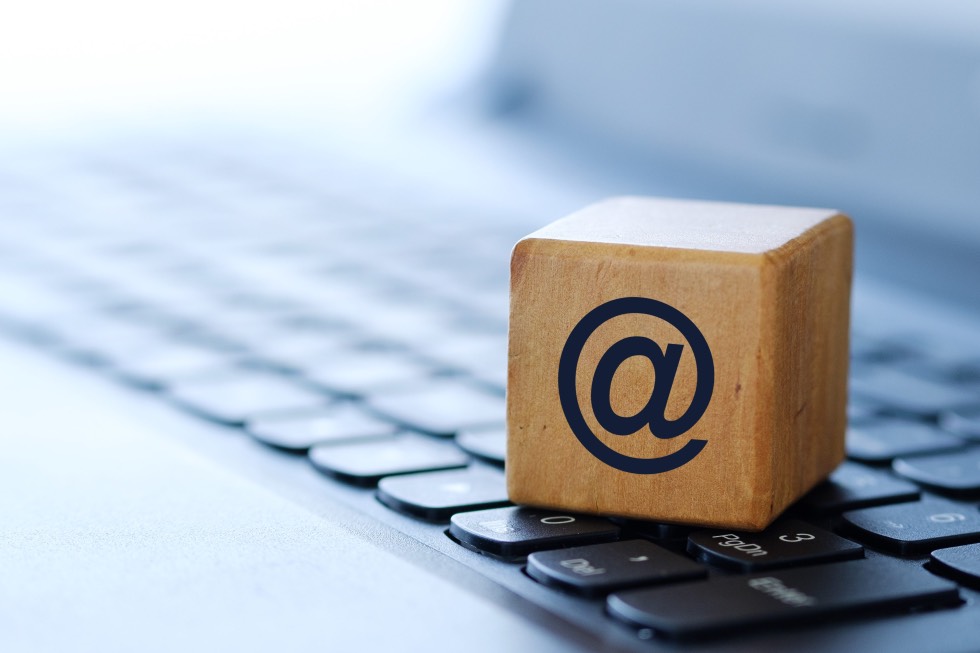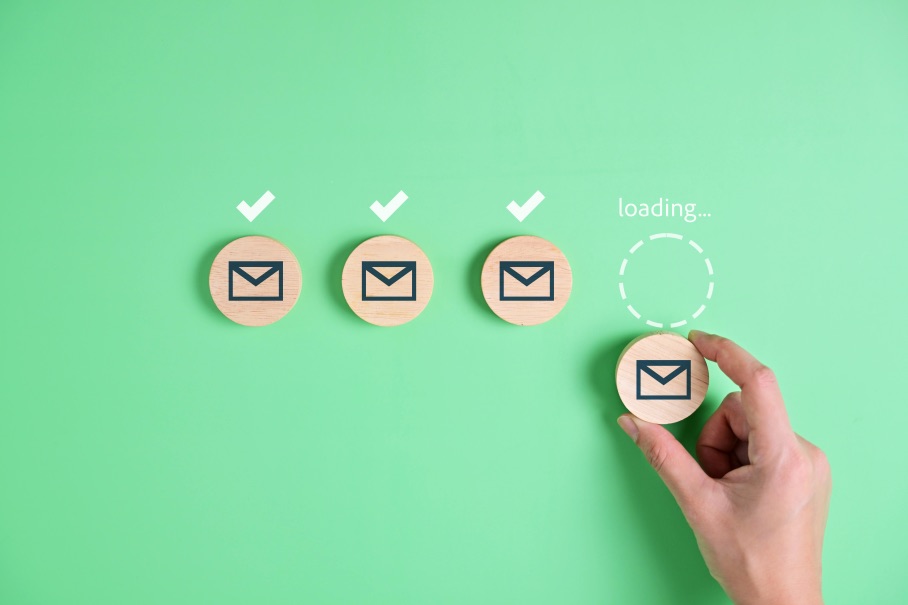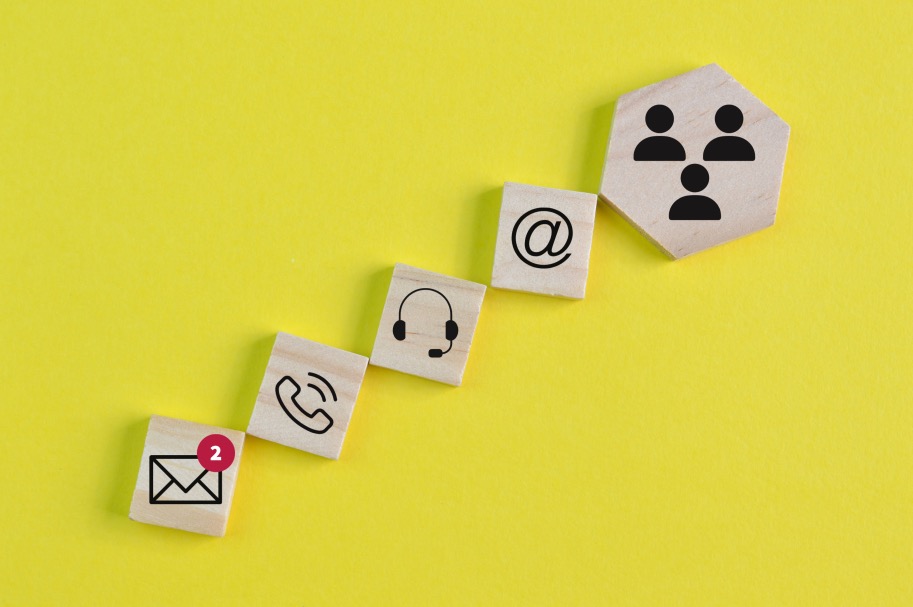If you’ve been using email marketing campaigns to reach potential customers but haven’t seen the results you hoped for, it might be time to reassess.
Email marketing is a valuable tool. But to make the most of it, you need to know how to use it to support your sales funnel.
A sales funnel helps guide leads through the customer journey with your brand — and email campaigns can help nurture that path every step of the way.
The key is knowing when and how to engage your leads at each point to keep them moving forward. In this guide, you’ll learn how to combine email campaigns and sales funnels to encourage more engagement and increase your revenue.
Funnel visualization: The secret sauce to knowing how to pair email campaigns with sales funnels
To know how to align sales funnels with email campaigns, take a step back and visualize the customer journey.
(Yes — that’s the secret. 😉)
Think about it …
- How do leads find you?
- What kind of information do they look for?
- What kind of proof helps them build trust with you?
- What eventually triggers the purchase?
- What keeps them around long-term?
Funnel visualization helps you map out the typical steps users take on your site or app. It highlights where they drop off and where they complete a goal — such as making a purchase or signing up for your email list. (If you’ve never done this before, consider building a funnel report first.)
Remember, this tactic has nothing to do with cold emails, as these are welcome and lead nurturing emails and this insight helps you improve your leads’ experience, and encourages them to follow through with your desired action.
More specifically, understanding where users are in the funnel means you can tailor your email campaigns to their specific needs and behaviors. For example, when someone is in the early stages of awareness, a simple welcome email may be enough to capture their interest.
But, as they move toward making a decision, you might need to send more targeted emails to address their concerns and nudge them toward buying.
To keep it simple, here’s a quick overview of relevant email campaigns you can send for each funnel stage:
- Welcome emails → Awareness stage
- Lead nurturing emails → Consideration stage
- Lead conversion emails → Decision/Conversion stage
- Post-purchase emails → Follow-up and Loyalty stages
Ready to maximize revenue by combining email marketing with your sales funnel?
Contact Growth Hackers
Let’s review this more in the next section.
Types of Emails to Use During Sales Funnel Stages
Each stage of the funnel requires a different email approach. Matching your email strategy to your potential customers’ needs at each stage can help you build stronger relationships and improve conversions.
Here are some specific email campaigns you can use during each funnel stage:
Welcome emails for the awareness funnel stage
At this stage, users are just getting familiar with your brand. Your goal is to build trust and give them a reason to keep moving forward.
Welcome emails should introduce your business, highlight what makes you stand out, and offer valuable content right away.
Your best bet?
Segment your customer groups or use triggered emails so users get ultra-personalized content.
Let’s take this example.
Someone signed up to your email list after seeing a coupon on your website. The next step? Send them a friendly email reminding them about the offer.
If they downloaded a free resource, like an ebook, use follow-up emails to show how your products or services can solve problems they care about.
Email sign ups from users in this stage often come from opt-in forms via:
- A pay-per-click campaign
- Social media marketing
- A blog page or post
- Search engines
- A landing page
Use gated content like downloadable PDFs, free ebooks, or special offers to capture leads. Be sure to add clear calls to action (CTAs) on your landing pages, website, and social media posts. For example “Download our free ebook.” Or “Use ‘OFF20’ for 20% off your first purchase.”
Users will sign up with their email to collect the download or freebie — and you can start nurturing them.

Speaking of which …
Lead nurturing emails for the consideration funnel stage
Now that your leads are considering your brand, it’s time to provide more value. This is the stage to address any questions or doubts they may have.
Use your emails to share educational content, case studies, customer reviews, and detailed product info. The goal is to guide leads toward seeing your product as the solution to their problem.
For instance, if a lead has been browsing a specific product on your site, you can send them an email with more information. Or a success story about how the product has helped others. Encourage engagement by including CTAs like signing up for a free demo, reading a customer review, attending or even hosting a webinar.
Lead conversion emails for the decision/purchase funnel stage
At this point, your leads are ready to make a decision.
Conversion emails should push them to act now. Use urgency and offer incentives, like limited-time discounts or flash sales, to motivate them to purchase.
For example, you could send cart abandonment emails to remind a lead about the items they left in their cart. Offer a discount or free shipping to nudge them into completing their purchase.
Personalize your lead conversion emails by adding product images, tailored recommendations, or customer reviews. Make sure to also make it very simple to buy. Include a link to purchase or to a relevant product page. Test your checkout pages and flows to make sure they’re smooth and glitch-free. (Customers need to be able to sign up or purchase your product as quickly as possible.)
Relevant CTAs for this stage include:
- Sign up for a subscription
- Choose a plan now
- Book a free demo
- Register today
- Sign up now
- Get started
- Book now
- Buy now
- Try now
- Join us

Post-purchase emails for follow-up and customer loyalty stages
Your relationship with customers doesn’t end after the sale. Post-purchase emails play a pivotal role in helping email subscribers continually engage with and build loyalty to your brand. They also encourage higher customer retention.
After a purchase, send a thank-you email confirming the order and offer tips on how to use the new product. Include links to customer support, related content, or other products they might be interested in.
To encourage repeat purchases and high customer lifetime value, send exclusive discounts for future orders. Introduce your loyalty program and explain how they can earn rewards. Celebrating milestones, like an anniversary of their first purchase, can also help reinforce the connection and make customers feel appreciated.
Be sure to also request feedback or ask for a customer review. This shows that you value their opinion and are motivated to continually refine your product or service with their needs in mind.
Relevant CTAs for this stage include:
- Book a VIP strategy session
- Grab your loyalty discount
- Join our Loyalty Program
- Buy your favorites here
- Sign up for rewards
- Refer a friend now
- Register today
- Sign up now
Drive more leads—combine email marketing with your sales funnel now!
Work with Growth Hackers
How to Build an Effective Email Sales Funnel
With the right tools and strategies, you can automate most of the email sales funnel process — and nurture leads in your sleep. Use Capterra or G2 to compare tools and see what reviewers have to say.
Consider testing tech tools like Mailchimp, ConvertKit, ActiveCampaign, and Klaviyo.
Here’s how you can use tools to support your email marketing goals:
Behavioral email workflows for personalizing the experience
Behavioral email workflows use your leads’ actions and customer behaviors to trigger relevant content.
For instance, if someone downloads a resource from your website but doesn’t engage with it, it might send a reminder email after a few days. If they interact with your content, it might send them a more personalized email diving deeper into that topic.
Automated workflows help create a more tailored experience so you can get closer to conversion.
Autoresponder emails for nurturing leads as they join
Autoresponders serve as confirmation emails and let leads know what they can expect to get from your email list. As they continue to engage with your content, you can send a series of automated nurturing emails to turn leads into customers.
Drip campaigns to give a consistent flow of value
Drip campaigns are a set of emails that offer value at each step. For instance, if a lead downloads an ebook, you might send the ebook as the first email in the series. And then follow it up with more emails discussing how your product or service can help them solve specific challenges.
A drip campaign keeps your emails relevant and timely so leads stay engaged with your brand throughout the sales funnel.

Wrapping Up on How to Combine Email Marketing and Sales Funnels
Combining email campaigns with your sales funnel nurtures leads into loyal customers.
When you automate email sequences and personalize email content for each stage of the funnel, you can keep prospects engaged and encourage more conversions. Give your leads the right message at the right time — and build a relationship that lasts.
Use these strategies to optimize your email marketing funnel and watch your conversions grow.
Growth Hackers is a leading sales funnel agency helping businesses from all over the world grow. There is no fluff with Growth Hackers. We help entrepreneurs and business owners combine email marketing with sales funnel, increase their productivity, generate qualified leads, optimize their conversion rate, gather and analyze data analytics, acquire and retain users and increase sales. We go further than brand awareness and exposure. We make sure that the strategies we implement move the needle so your business grow, strive and succeed. If you too want your business to reach new heights, contact Growth Hackers today so we can discuss about your brand and create a custom growth plan for you. You’re just one click away to skyrocket your business.




